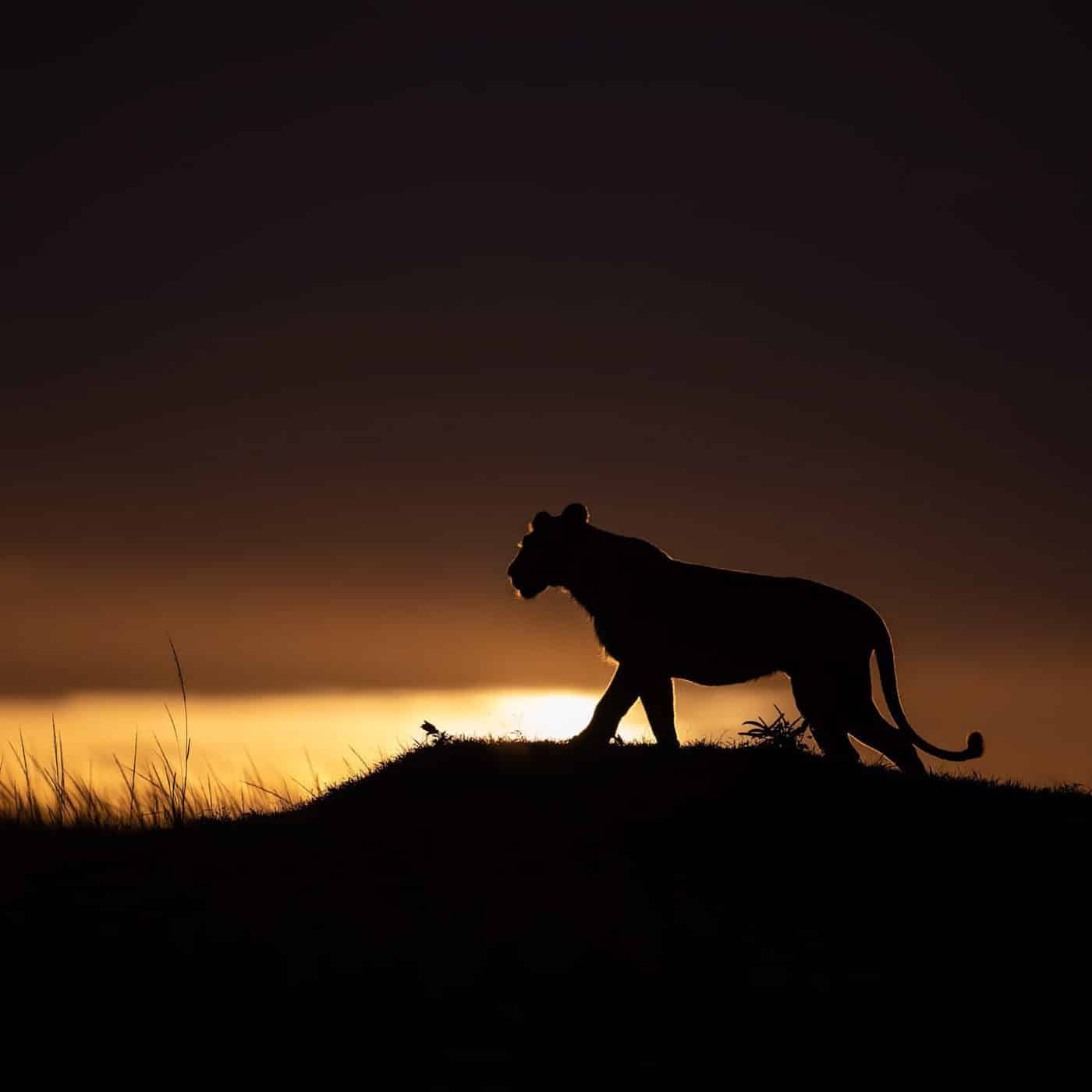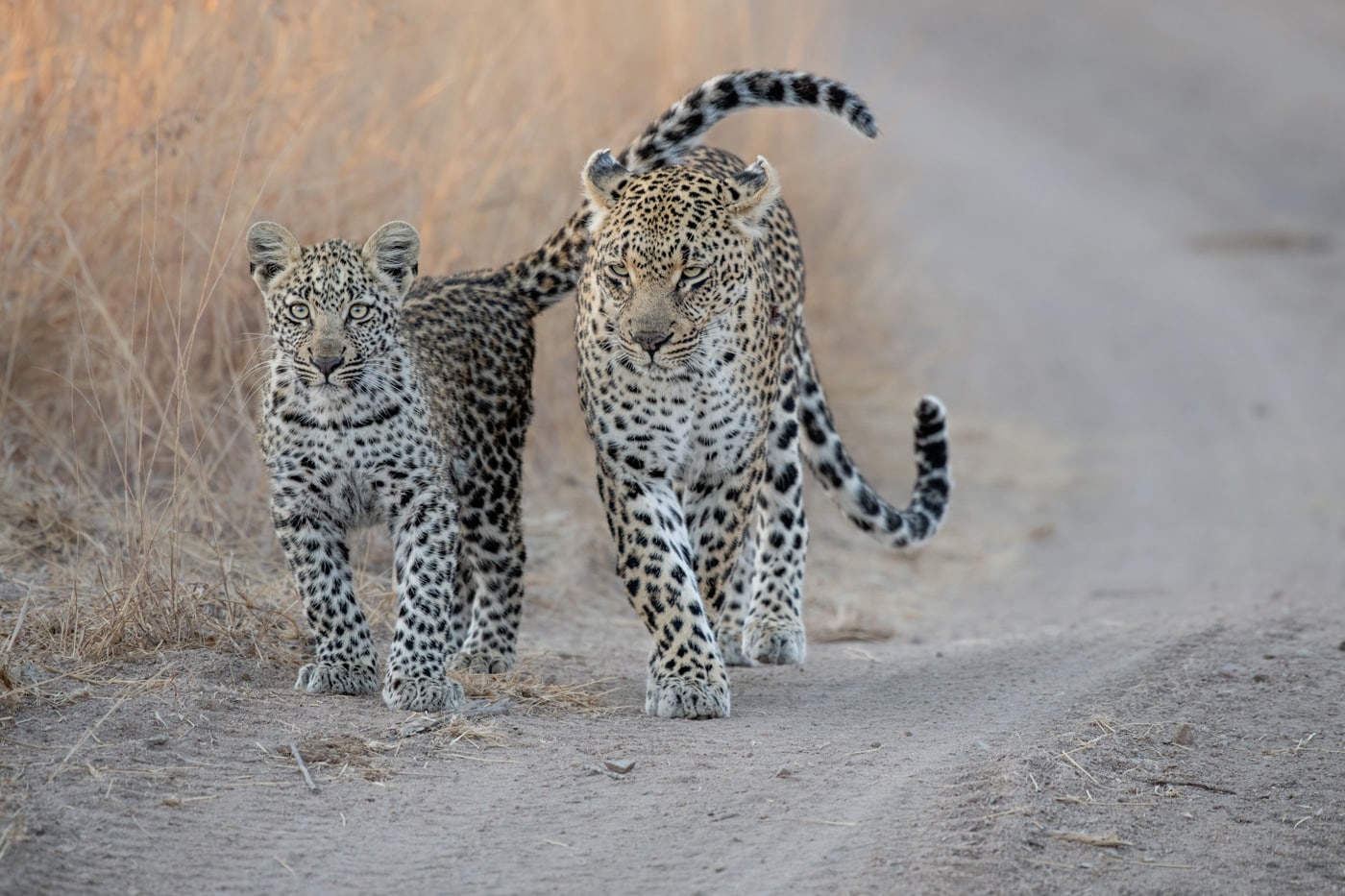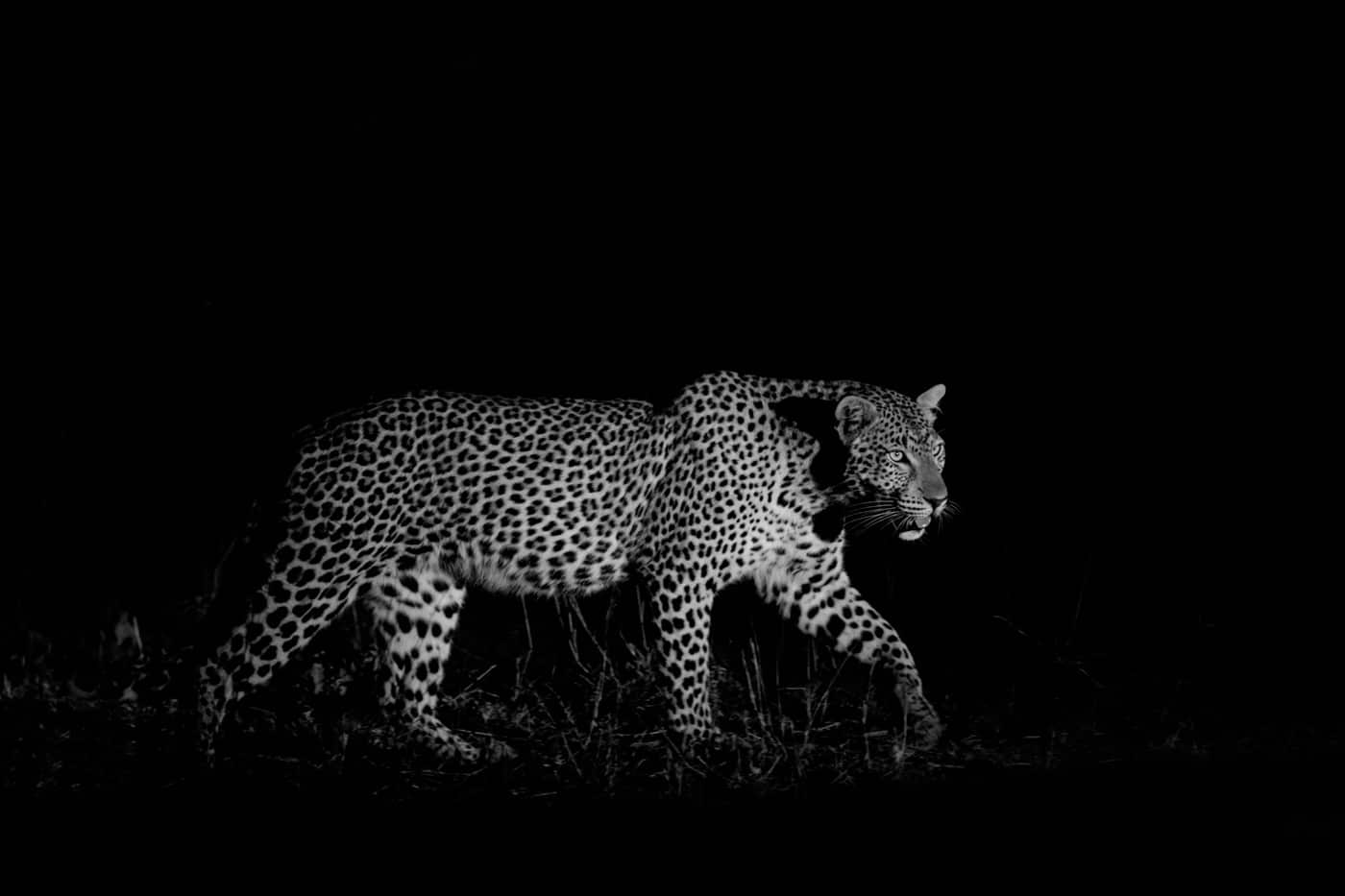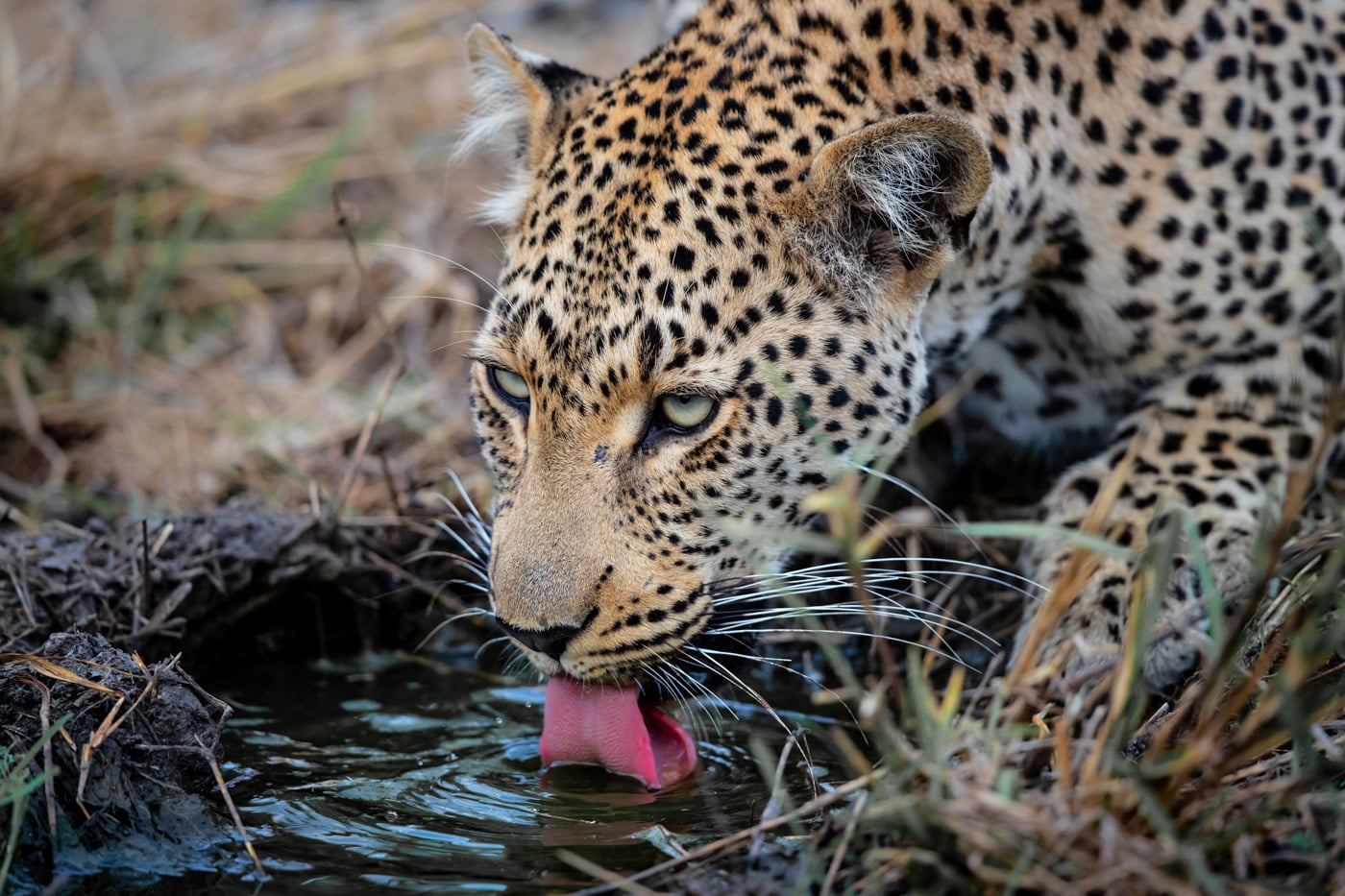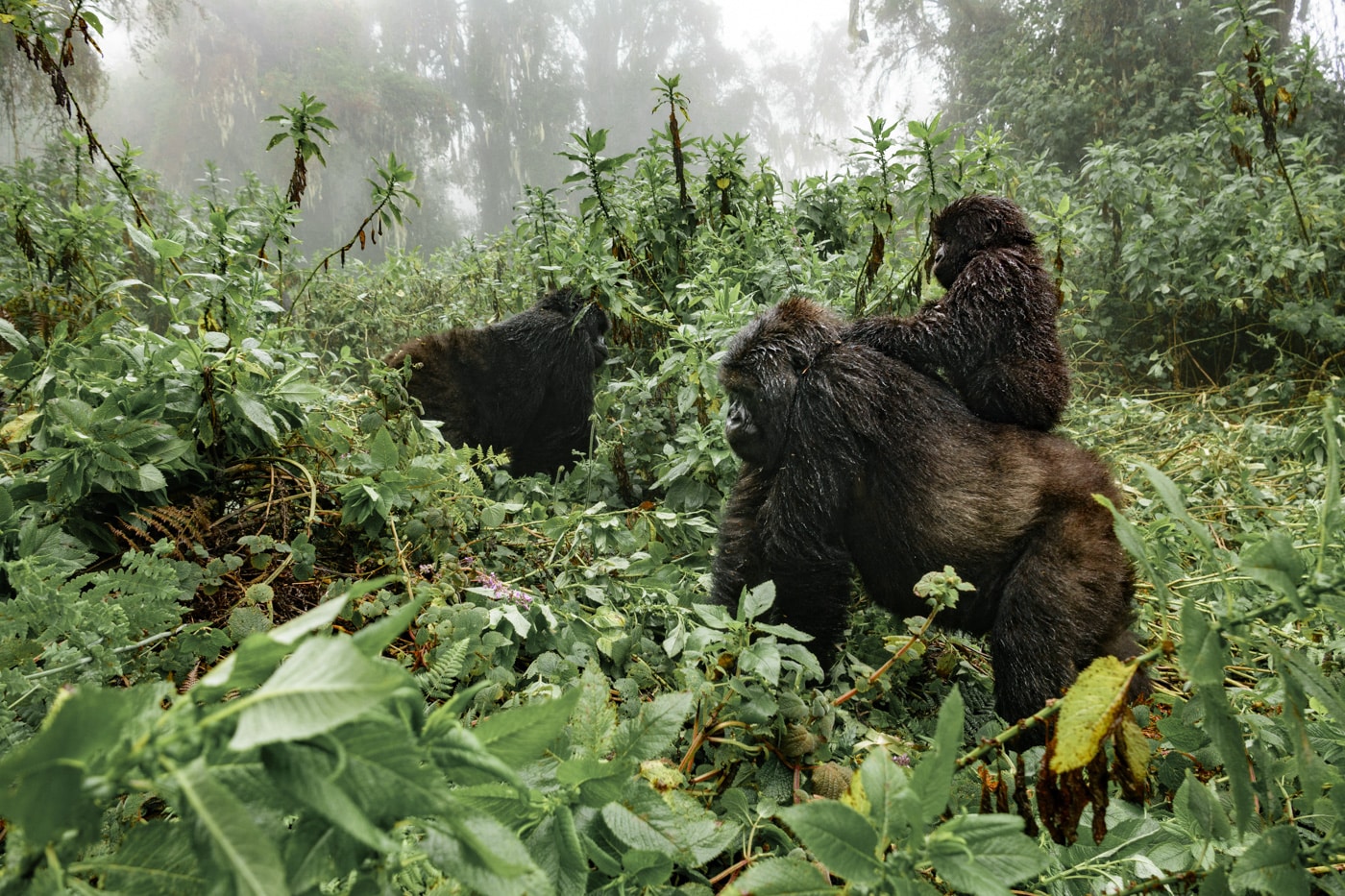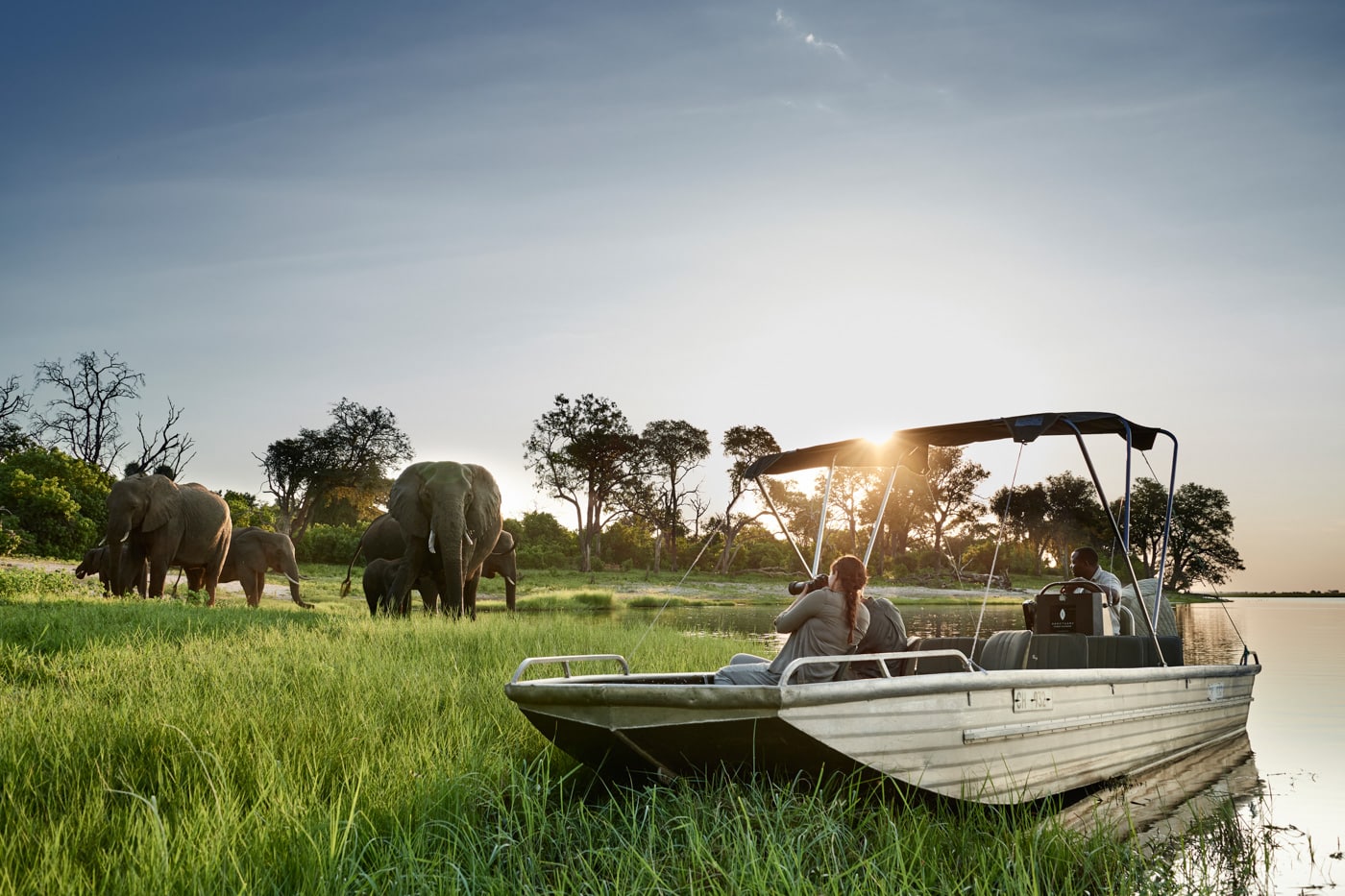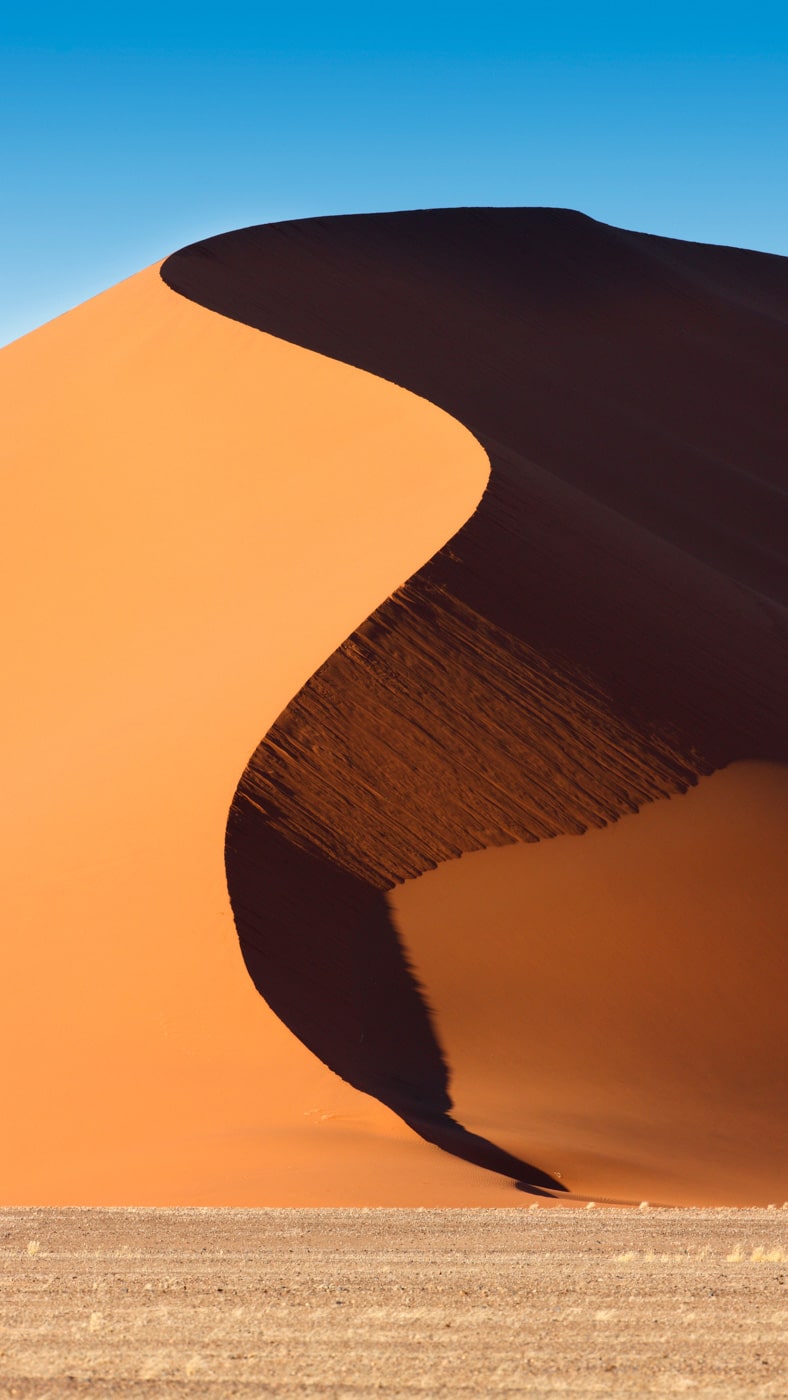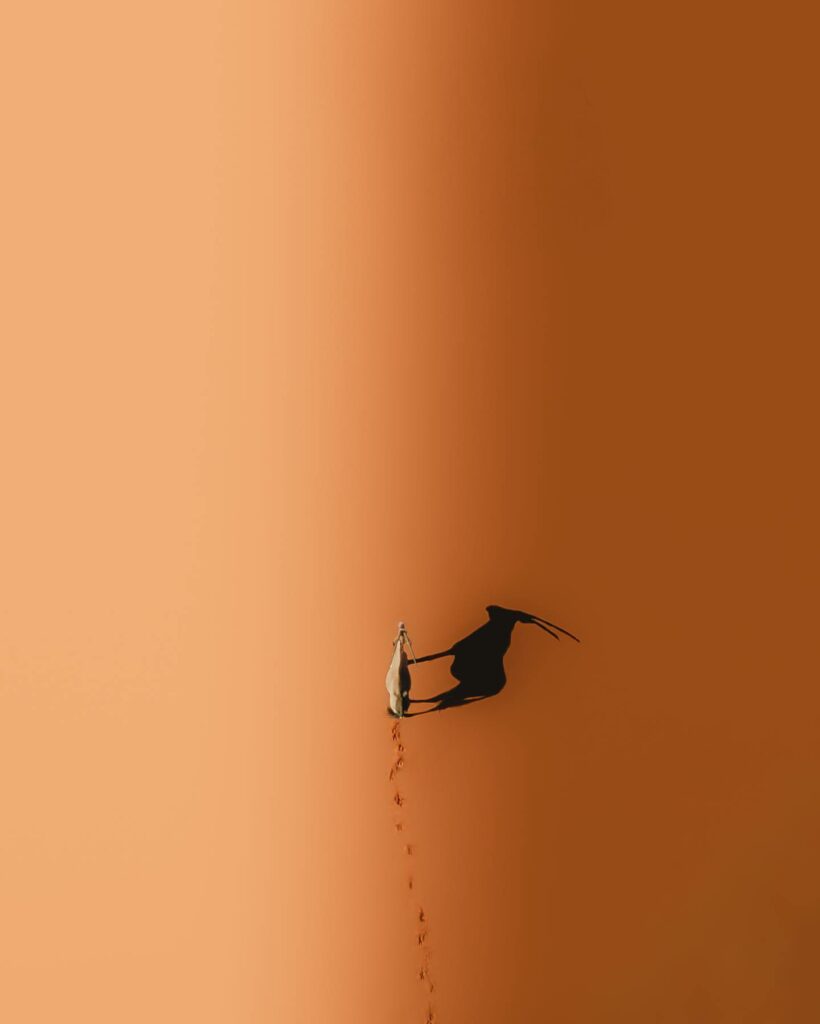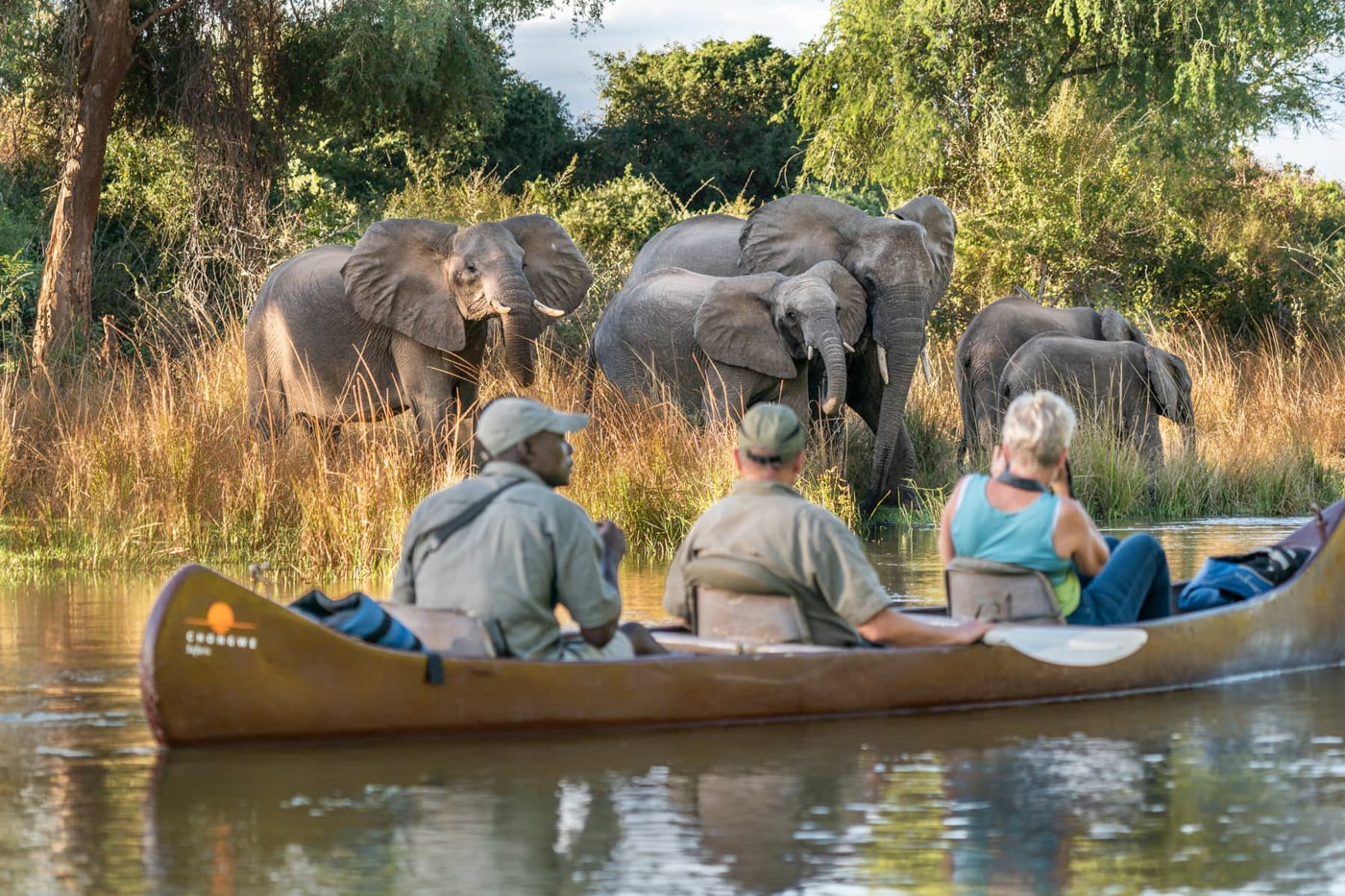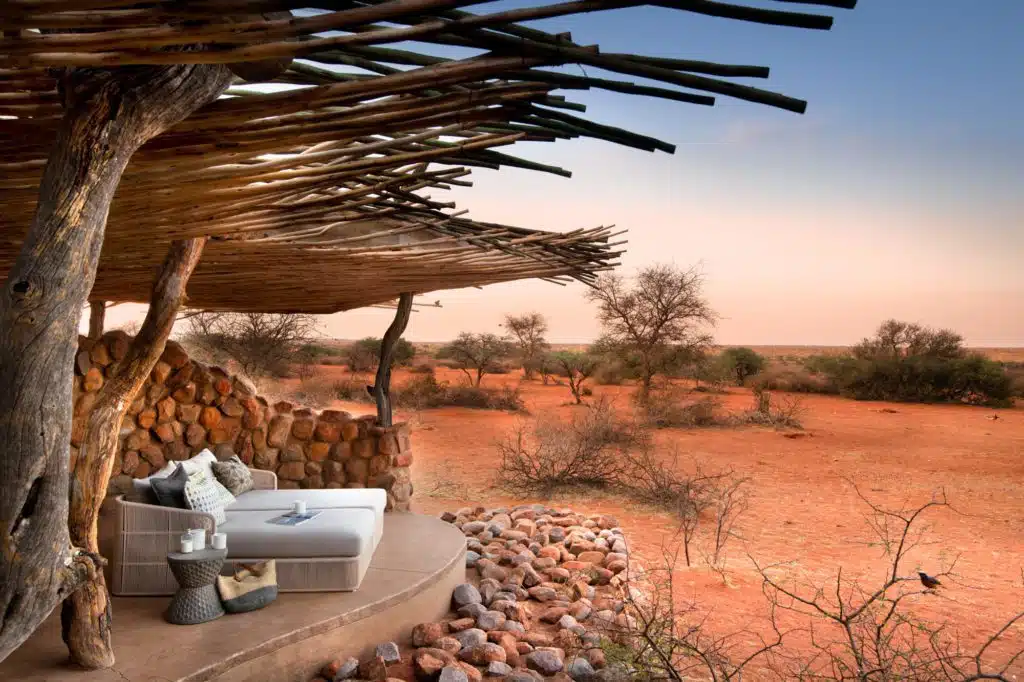AFRICA THROUGH THE LENS
Best Destinations for Wildlife Photography
Almost wherever you go and whatever your experience, Africa is simply superb for wildlife photography.
Even with an iPhone and a cursory understanding of photography, one can create some spectacular images. The combination of expert guides, incredible landscapes and animals found nowhere else in the world makes Africa an exemplary destination and one that provides inspiration and subject matter in equal proliferation.
While any safari journey lends itself to photographic opportunities, some locations are in a class of their own, and often not for the most conventional reasons. When we close our eyes and visualise ‘safari’, our minds will conjure certain almost clichéd images; the giraffe reaching for the topmost branches of a thorntree, the elephant family marching across the grasslands, cheetah peering to the horizon or hippos yawning wide their mighty maws in the muddied waters of a lake.
These are all wonderful scenes to behold and to capture through the lens, but they are also somewhat predictable. When considering a destination’s photographic opportunities, various factors arise: the abundance of wildlife, the landscapes, the weather and also its uniqueness, its ability to offer an image that can’t be found in the average Google search or mass-produced guidebook.
Each combining these aspects in their own peculiar ways, these are our top seven destinations for African wildlife photography:
- Maasai Mara, Kenya
- Sabi Sands Game Reserve, South Africa
- Bwindi Impenetrable Forest, Uganda
- Okavango Delta, Botswana
- Sossusvlei, Namibia
- Serengeti, Tanzania
- Lower Zambezi National Park, Zambia
MAASAI MARA, KENYA
So about that cliché…
The Maasai Mara in Kenya is quintessential Africa. It possesses the landscapes of Hollywood movies, iconic wildlife, the wonderfully colourful Maasai people and so much more. It has been explored by camera-wielding visitors for the best part of a century and these millions of images have permeated our perceptions of what safari wildlife photography should be.
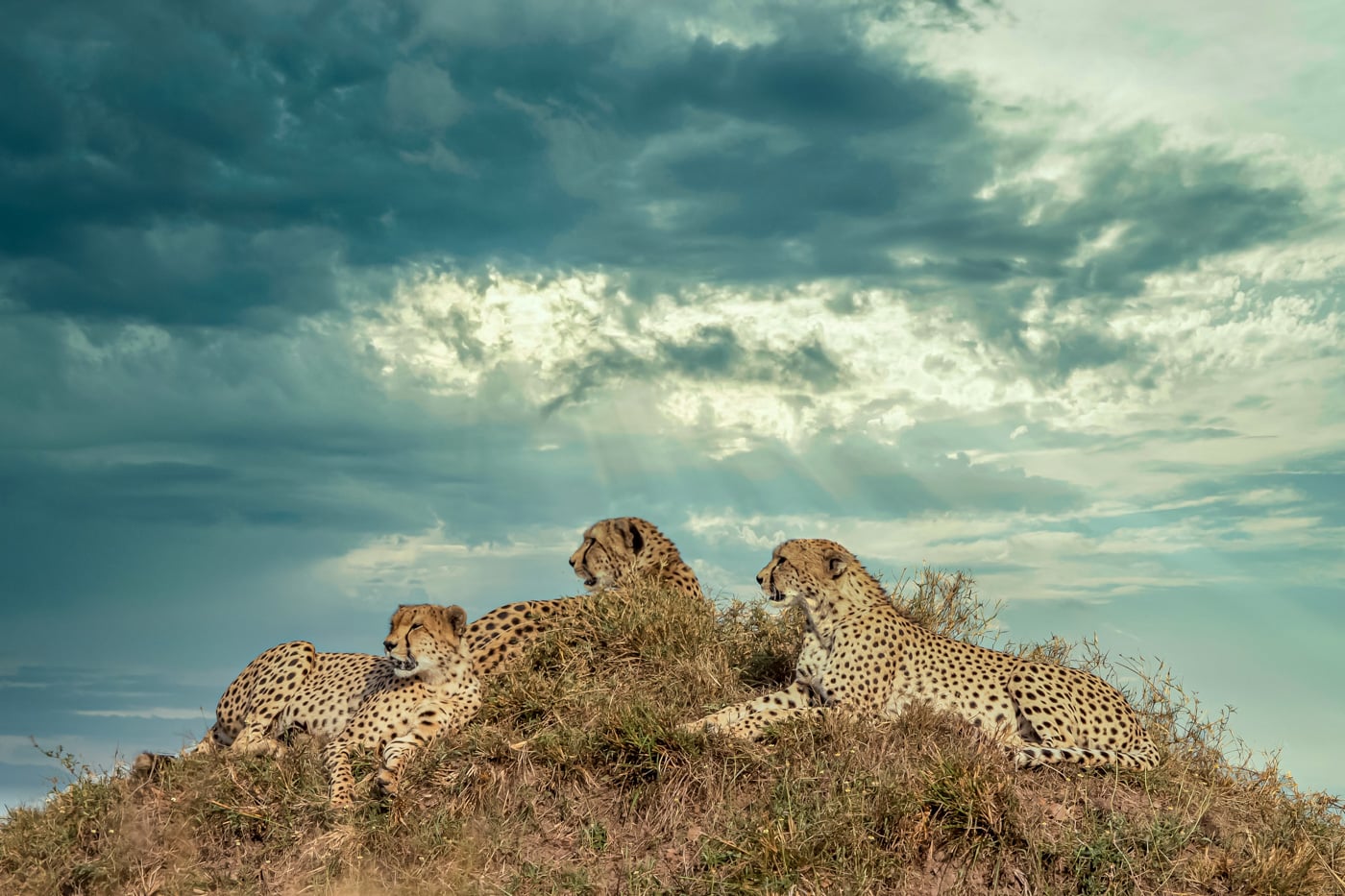
Though talented photographers are continually redefining wildlife photography on the Mara, it possesses a wonderfully classical personality that oozes forth from digital screen or magazine page. It is this timelessness that continues to draw people within its borders year after year, and why any photographer should add the Maasai Mara to their shoot list.
Some cliches are tired, trite, even boring, but despite its almost excessively-photographed landscapes, the Mara never gets old.
One man who has banked his business on this fact is Alex Walker. A passionate and talented lensman himself, Alex’s Serian safaris invite photographers of all abilities to join him on the Mara, seeking out various species and sharing the expert wisdom he has gained from a lifetime of shooting the region.
Photos: @alexwalkerserian
For those wishing to capture Africa’s distinctive scenes, few introductions could be better. No matter the experience level, Alex caters to all, from explaining the basic techniques to sharing the nuances required for shooting Africa’s creatures and encapsulating its wide-open spaces bathed in golden light.
Even the best of photographers has a modicum of learning to achieve when embarking on a new project or venturing to unfamiliar territory. Alex’s ability to elevate his guests’ imagery is second to none and can be absolutely invaluable when wishing to capture visions of Africa.
SABI SANDS GAME RESERVE, SOUTH AFRICA
In some regards the antithesis of the Maasai Mara, what Sabi Sands lacks in expansive vistas it more than makes up for in a higher density of wildlife and a more personal experience. Varied ecosystems and lush bushland play home to almost 150 mammal species and 300 varieties of birds, creating in many ways the best environment for wildlife photography.
Kruger National Park is often heralded as one of the foremost locations to see the Big Five, but with its popularity and scale, this can prove more challenging than one might suspect. Even when your quarry is found, the experience is often shared with others, sometimes in excess.
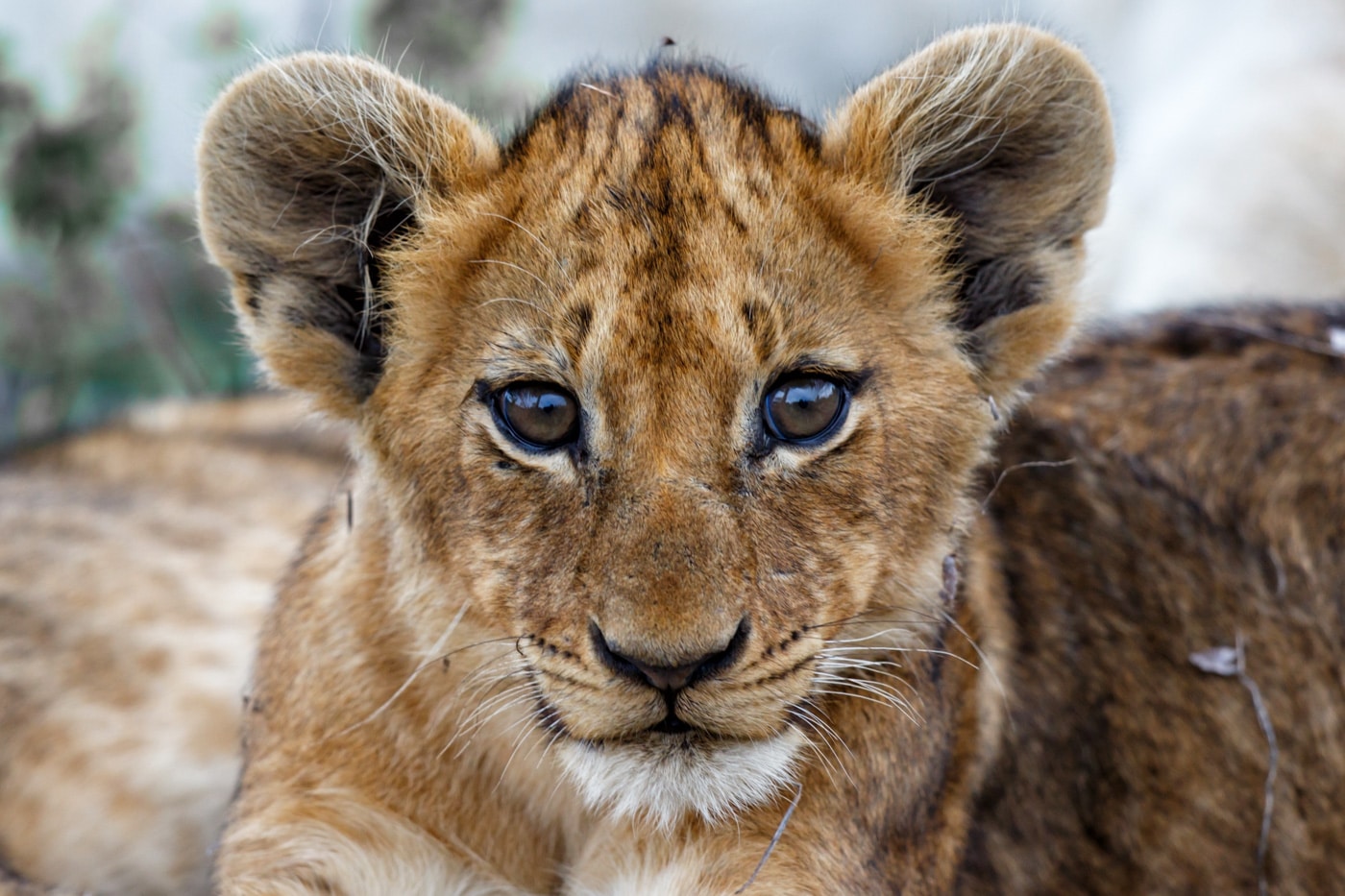
Not only does this take away the magic of the moment, it also has time constraints, with each game vehicle in the area only allotted a specific window of time in prime position. Sharing a border with Kruger, Sabi Sands benefits from the transmigration of its native creatures but being a private reserve, lacks the crowds found in public parks. Additionally, guests have as much time as they please at each location or spotting, affording photographers more than enough time to wait for and frame that perfect moment.
One of the Big Five has placed Sabi Sands on the map, and it is universally reconised as the premier destination for viewing leopard in the wild. A flourishing population that is perhaps not habituated, but certainly more tolerant of human presence allows for an exceptional opportunity to capture these usually elusive big cats.
It isn’t only the leopard of Sabi Sands that draw visitors, and photographers in particular. Lion, cheetah, giraffe and elephant are all found here in number, and several of Africa’s rarities also dwell in Sabi Sands. Wild dogs, aardvarks, civets, honey badgers, pangolins and other endangered species can also be spotted with a little luck.
BWINDI IMPENETRABLE FOREST, UGANDA
An impenetrable forest may not seem the most photogenic of environments, but its residents provide one of the rarest and most extraordinary of wildlife photography experiences.
The mountain gorillas of Bwindi are a nature photographer’s dream subject and sharing a few precious minutes with one of our closest living relatives is often moving to tears. The experience itself is enough to warrant the journey, both to Uganda and through the several hours of trekking.
Guides and trackers are informed of the troupe’s location – all but guaranteeing success – and require extensive training in order to keep both humans and gorillas safe. Because of these factors, one can be almost certain of capturing that perfect image.
Gorilla are exceptional subjects to photograph. Perhaps it is their familiarity to our own appearance, the expressiveness of their jet-black features, their contrast juxtaposed with the viridescent forest, or maybe they are insatiably vain! The combination of aspects creates one of the most breathtaking moments of wildlife photography for professionals and amateurs alike.
With only six to eight guests allowed on any one trek and an entire hour to enjoy this incredible interaction, there is adequate time to get the magical shot. However, though gorilla may approach their visitors, guests aren’t permitted closer than seven metres. Adding the low-light setting, selecting the correct lens is essential. Though a cheaper camera with reasonable optical/digital zoom will suffice, for an impeccable gorilla portrait a 70-200mm lens with low aperture, preferably f2.8, is essential.

Though this focuses on just one specific species, such is its rarity and captivating beauty that it is an unmissable addition to a wildlife photography bucket list.
OKAVANGO DELTA, BOTSWANA
Much about photography is in the perspective. The right angle, depth of field and composition are all critical elements in turning an average snap into an extraordinary image.
The Okavango Delta provides a perspective rarely found in the wild, and an environment both abundant in nature and unlike anywhere else.
The network of waterways attracts a vast array of species and is particularly good for those interested in photographing birdlife. This aqueous canvas creates an exceptional backdrop for any image, adding an aspect of drama to even a mediocre shot. The mirrorlike surface of the dark water reflects all that lies above; the lush grasses and reeds, the vast blue skies and the wealth of life that exists there.
Photos: Sanctuary Retreats
This in itself is an inspiring perspective, but one aspect of an Okavango safari introduces a fresh dimension to wildlife photography. Taking to the water on a boat or mokoro, one can sink to eye level with the creatures on the banks and beneath the surface. Seeing elephant drinking from this lower perspective brings a dimension of connectivity not often found when shooting on the plains from a game vehicle. One can also use the inky riverways to complement, contrast and juxtapose the subject, taking a water-level viewpoint to capture hippo breaking the surface, crocodile disappearing into the depths or birds duplicated in its tranquil surface.
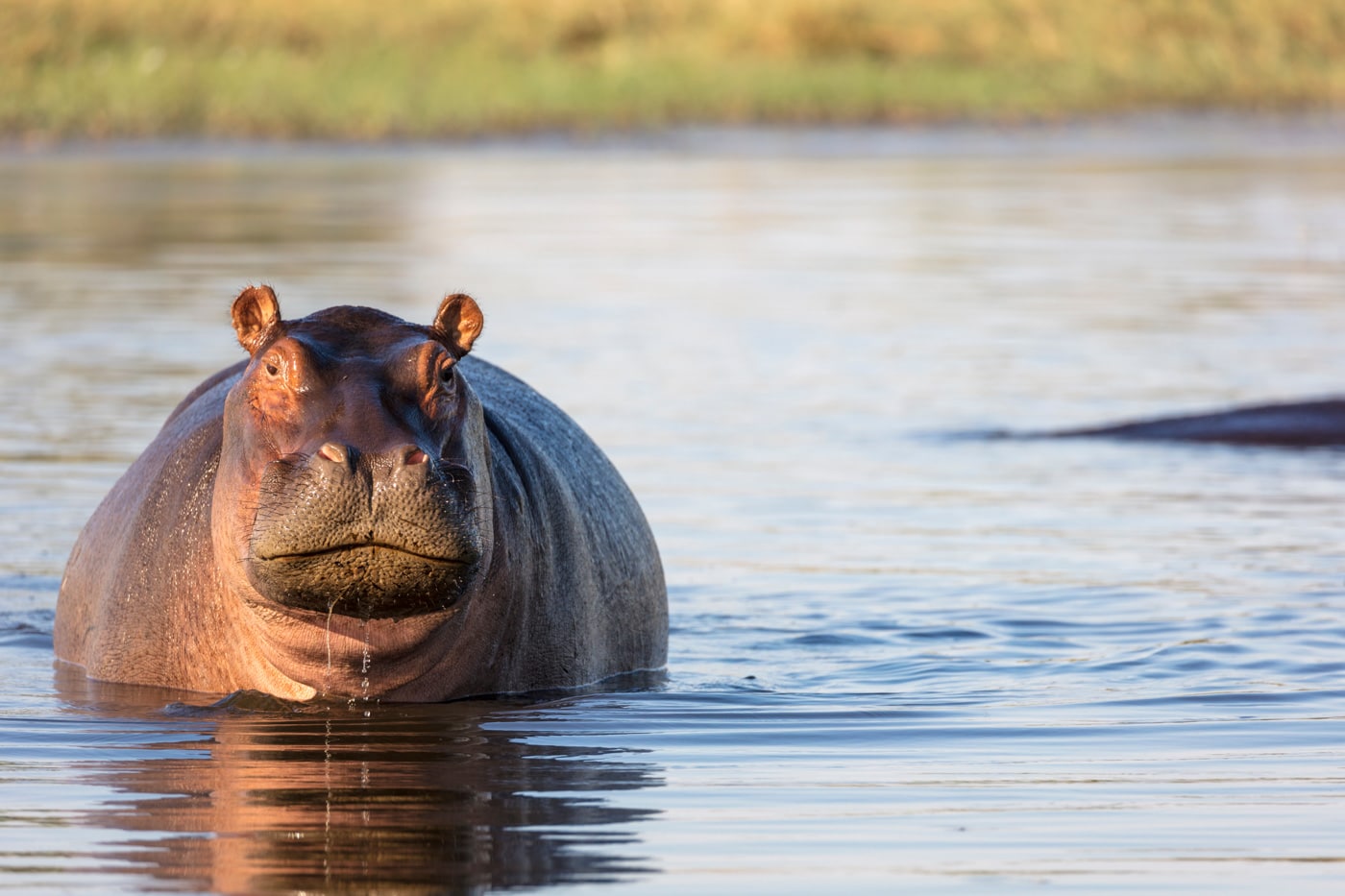
The Okavango is teeming with life, and certain seasons draw in species not seen for most of the year and in few other places across Africa. It is a highly renowned destination for wildlife photography and, as such, guides and staff are highly experienced in escorting guests to the most fulfilling and rewarding locations, and at the best times of day.
Even if taking a communal cruise on a larger vessel, photographic opportunities abound, and as the golden light of dusk illuminates the grasslands and waterways of the delta, an entirely new perspective emerges.
Whether a snapshot on a pocket camera or an artistic image expertly created through a $10,000 lens, the Okavango is supremely photogenic.
PHOTOGRAPHY TIPS
We highly recommend investing a little if you’re wishing to capture your safari in the best light. It doesn’t take much, but making an informed camera purchase will place you in the best position to capture the nature and landscapes of Africa. Whether you’re looking for a simple point-and-shoot pocket camera or prepared to purchase a more technical DSLR camera, our wildlife photography guide gives you a complete overview of equipment, accessories and techniques to consider prior to departure on your photographic safari.
Though phones are a poor substitute for a more professional camera, their convenience still makes them a reasonable backup. You’ll never be able to capture images of the same quality, but knowing the best techniques for phone photography can help you still achieve some reasonable shots.
LEARN MORE:
https://edition.cnn.com/cnn-underscored/electronics/iphone-photography-tips
SOSSUSVLEI, NAMIBIA
Taking a different perspective entirely, Namibia’s Sossusvlei, with its terracotta dunes, flat plains, immense sky and breathtaking starfield, is a landscape photographer’s dream destination.
The Deadvlei, with its skeletal camelthorn trees juxtaposed with the blue sky, orange sand and white valley floor will have even the most unenthused reaching for their camera or phone.
In addition to its surreal, otherworldly landscapes, one of the beauties of photographing in Sossusvlei is that it isn’t going anywhere. You can take your time to frame the shot, even shoot at varying times of day and pick the best light for your image.
Though nature is sparse, it is dramatically presented against the desolate desert vista, and with a reasonable zoom lens and a little patience, one can capture some extraordinary pictures.
@solly_levi has been photographing the wildlife and scenery of Namibia for several years, mastering lighting, composition and post-production to produce some of the most unique and exceptional wildlife photography.
Photos: @solly_levi
Though Sossusvlei is our top destination of choice, Namibia’s singularity is pervasive. The Skeleton Coast is a cataclysmic convergence of desert and ocean, the stark shipwrecks and packs of fur seals creating dramatic subject matter to punctuate the land and seascapes.
Though visitable by appointment only, Kolmanskop is a ghostly depiction of the desert’s insatiable hunger. Abandoned in the mid-1950s, the former diamond mining town was once one of Africa’s wealthiest settlements. With the rise of mining elsewhere, Kolmanskop’s 50-year existence ground to a halt in 1956 and residents left en masse, the buildings left still with furniture, pictures hanging on the walls and crockery on the tables as if the population spontaneously disappeared.
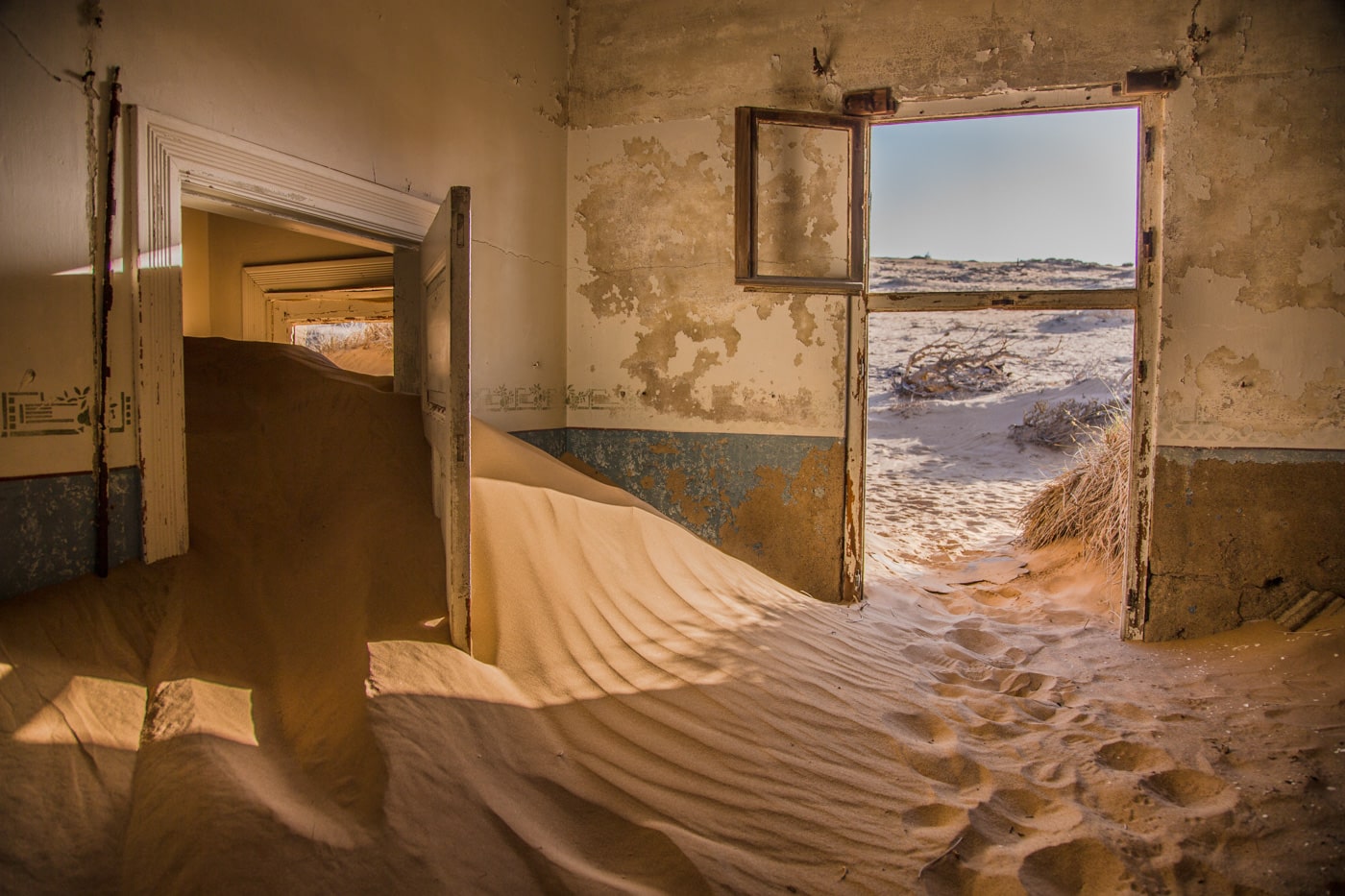
Slowly being swallowed by the Namib Desert, Kolmanskop may not be a wildlife photography destination, but it is certainly worthy of its photographic attention.
For nature, Etosha National Park combines the arid desolation of Sossusvlei with the nature of Africa’s game reserves and parks. The desert-adapted wildlife stand out dramatically against the salt pans and barren vistas, and with fewer places to hide they can be spotted and photographed far easier than in other more profuse regions.
Though Sossusvlei lacks a significant proliferation of life, it takes on a different level of focus. A single oryx wandering the dunes replaces a herd of wildebeest on the Mara, a dung beetle attracts as much attention as a lion, an zebra create monochromatic contrast on the vivid hues of sand and sky.
SERENGETI, TANZANIA
In the world of photography, timing is everything. This can be as immediate as a bird taking flight or as expansive as choosing the right season to visit a certain country.
The annual migration of two million ungulates, predominantly wildebeest and zebra, though also including Thomson’s and Grant’s gazelle, and eland, is quite possibly the greatest wildlife spectacle in the world. Though in continual motion throughout the year, ranging from the Southern Serengeti across the border into Kenya’s Maasai Mara in the north, there are certain months when this marvel of the natural world is at its best.
The migration spends two-thirds of its 500-mile (800km) trek in the Serengeti, with the months of May to September often being suggested as the best.
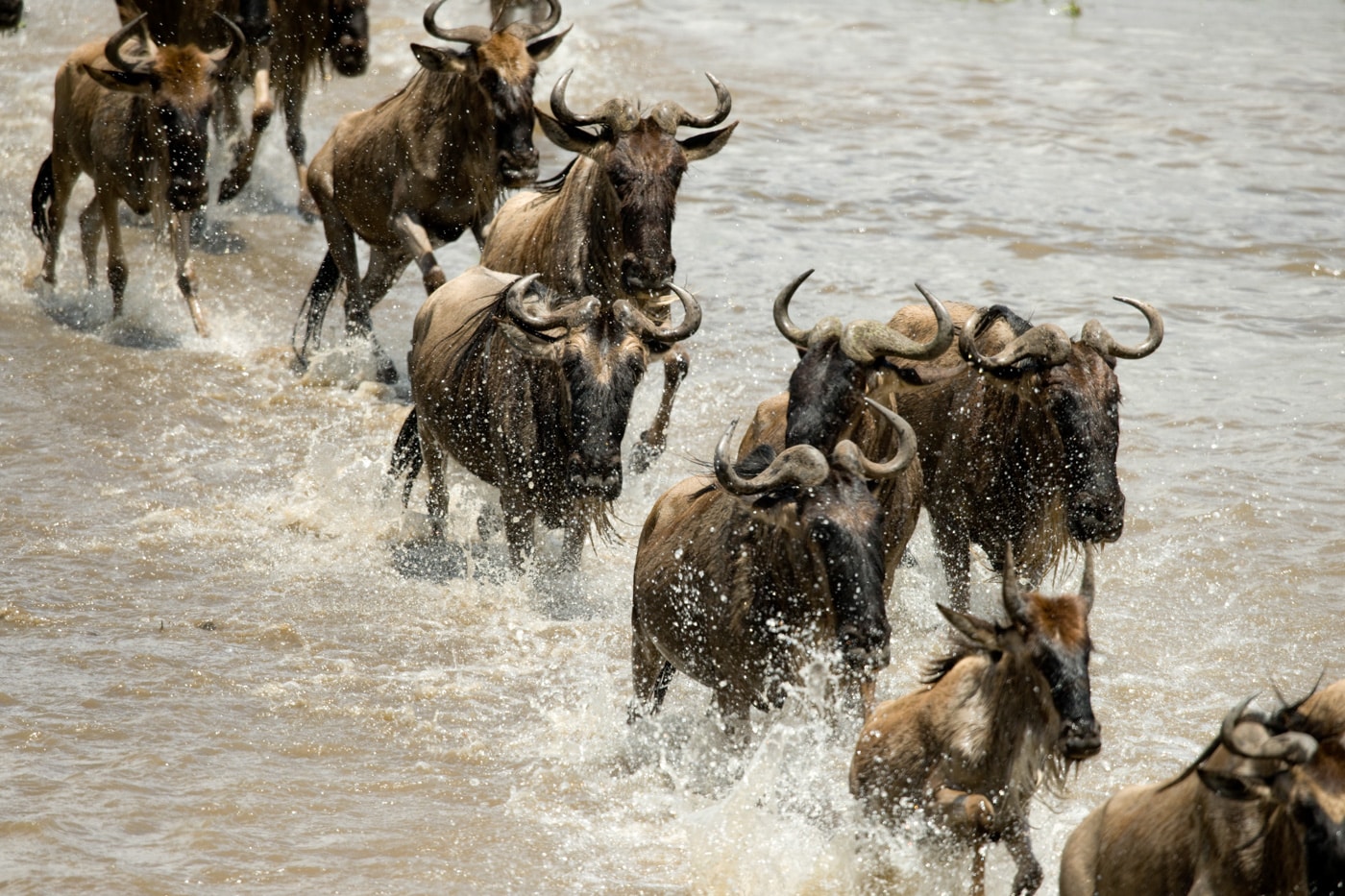
During this time, the wildebeest have calved, the grasses are verdant, river crossings take place and predator activity is high. The drama, power and rawness of nature are on display with both new life and death being encapsulated on any one day, even within moments of one another. This can be highly confronting to observe and even more to train one’s lens on, but it is an exemplar of the wild at its most pure.
Even without viewing wildebeest launching themselves in the thousands into crocodile-infested waters or a cheetah racing at top speed to take down a zebra foal, the very spectacle of so many animals surging across the grasslands of the Serengeti is unequalled.

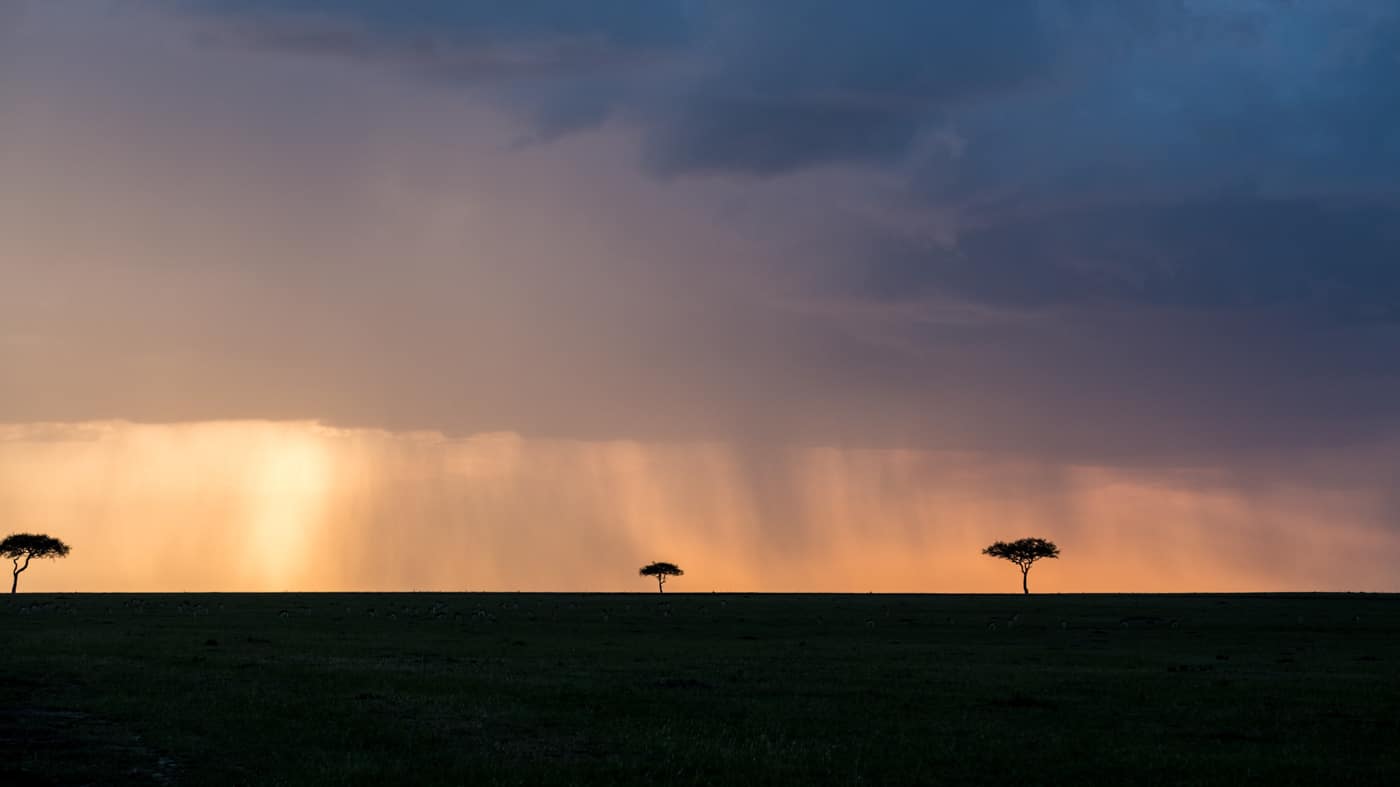
As anyone who has watched a David Attenborough documentary will attest, observing the loss of life can be heartrending, and it may not be every photographer’s objective to immortalise these sometimes tragic scenes. But with every life lost, several more are sustained, the predators in as much need of food as the herbivores migrating to greener pastures.
There is plenty more to capture in the migration though; a tidal wave of creatures cascading down a bank, a lion lying in wait, a newborn calf and mother or simply the black and white river of creatures meandering across the grasslands.
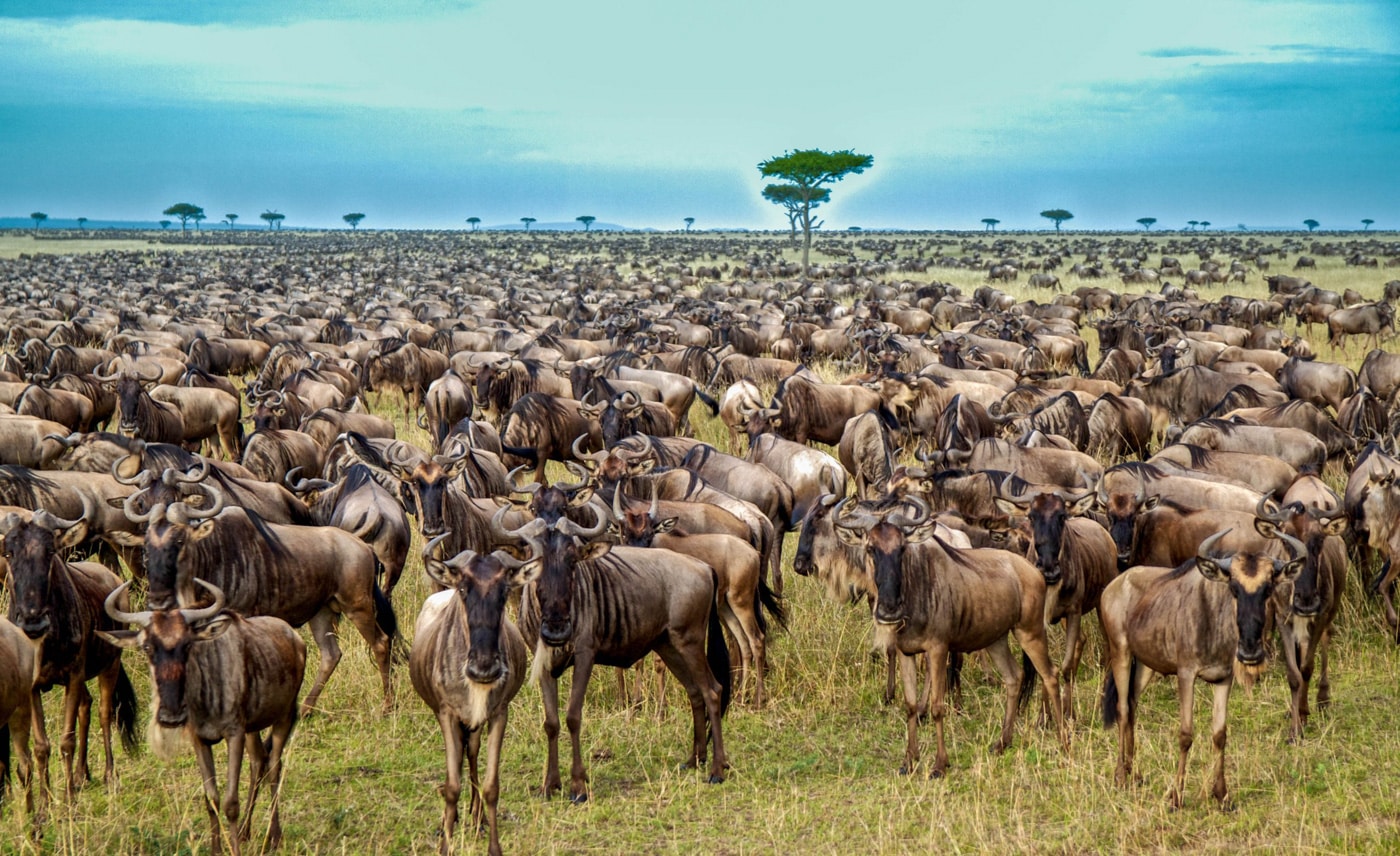
The world’s largest mammal migration is unmissable for any avid wildlife photographer. With so many creatures and so much space, it is worth considering a larger lens to capture the Great Migration, ideally 400mm or higher.
LOWER ZAMBEZI NATIONAL PARK, ZAMBIA
Like the Okavango Delta, the Zambezi provides a waterborne vantage point from which to shoot, but this is only one aspect of Zambia’s potential for wildlife photography.
From the river, you can capture elephant families crossing or the incredible carmine bee-eaters excavating their nests in the steep, high banks. From a boat, Zambia is certainly worthy of a mention when considering a photographic safari, but its inclusion in this list is for a more unique trait; that of the walking safari.
Though game drives allow you to see a greater variety of creatures across a far wider area, they might lack the opportunity to pause and reflect, or watch nature unfold in front of you.
Time slows on a walking safari. You may not see as much, but you do so at your own pace, and with animals undisturbed by the rumblings of a game vehicle. The wildlife may be the same, but it is in a different setting and more at ease in its surroundings.
Photos: Chiawa Safaris
The environment is also distinctly contrasting to other regions, with the river giving way to woodlands and glades, and night drives add a completely contrasting dimension to wildlife photography.
As well as the home of walking safaris, Zambia is one of the foremost destinations for game hides, and several lodges possess hides or blinds from with to shoot wildlife – strictly in the photographic sense.
Taking advantage of neighbouring waterholes, camps have erected permanent, secure and comfortable wildlife hides where one can spend several hours observing wildlife completely undisturbed, even entirely unaware of one’s presence. This creates one of the most remarkable opportunities for capturing portraits and close-ups, allowing the time to watch, wait, frame and capture multiple images of your subject.
Photos: Time+Tide Chongwe River Lodge
While other destinations hold their own distinctive appeal and benefit, Zambia offers a more tangible immersion in the natural world, bringing with it certain nuances in photography that can only be gained through a closer connection to wildlife.
Wildlife photography is wonderfully exhilarating and can absorb many happy hours of observation. But it also takes patience, and can if indulged too excessively can even detract from a safari experience.
Unless they are professional photographers and intent on capturing specific images, we urge clients to limit their time behind the lens, committing images to memory, rather than memory cards.
Of course, immortalising your safari experience is desirable, perhaps even essential, but the separation caused by a viewfinder or digital screen can stand in the way of the real world.
Taking a camera, finding the opportunity to capture incredible images and partaking in activities specifically designed for their photographic potential are all superb experiences, but they should always be balanced with time spent simply observing nature, naturally.
For more ideas or advice on photographic safaris, whether on the equipment required or destinations preferred, contact your Travel Designer.


